Behind the Scenes and in the Studio with Denise Driscoll
by Tatiana Flis
“Meditation is to dive all the way within, beyond thought, to the source of thought and pure consciousness. It enlarges the container, every time you transcend. When you come out, you come out refreshed, filled with energy and enthusiasm for life.”
In April, I went to the Norwood Space Center* to visit Denise Driscoll in her studio. Denise welcomed me with open arms, and we started off our visit with a tour of the old mill. We walked through a mini city of artists and creative entrepreneurs, as well as the Percival Brewing Company, where The Wall Gallery showcased “Shimmer,” an exhibit of Denise's large canvases. The paintings on display, exploring interconnection with brightly colored yet darkly tangled surfaces, fit the space perfectly and contributed to the lively atmosphere.
Upon arriving at Denise’s corner studio, I was struck with how the word ‘Shimmer’ truly captures her work. The natural light poured in through the windows and radiated off of Denise’s canvases. The choice of pearlescent paint combined with her amorphous forms harnesses light and blurs the boundaries of depth perception. Denise’s pieces are ethereal spaces which connect the visible world with the unseen; there is a flurry of activity, a strong push and pull of being in two different realities at the same time.
Reflecting back on our visit, I am still filled with an energy from her interlocking forms. They reflect more than Denise’s experiences with the world around her - these chaotic masses become a gateway to meditation and contemplation for the viewer. Denise is always experimenting and revisiting past conceptual interests through layering, developing, and erasing, all through the love of exploration. She has an uncanny ability to contextualize her current work by linking it to the greater cyclical act of art-making and life.
Read more about Denise's work from her perspective below.
Portrait of Denise in her Studio
Where does the amorphous, yet familiar, array of shapes and forms in your work come from?
The shapes in my current paintings are simple loops of paint that combine to form perforated membranes or nets. This repeating shape occurs organically and mechanically all around us: oil bubbles in a pot of boiling water, drops of condensation on glass, plastic mesh bags, ripples of sun on a body of water, plastic six-pack rings, and patterns on vegetables and flowers. They are also inspired by cellular structures and views of cities from the air at night.
Several years ago, I organized several collaborative projects. To understand my role in the process, I would draw little diagrams using circles to represent the participants, the objects we made, and myself, to understand how we were relating to each other, and to follow the flow of energy and power. These little diagrams have continued to shape my paintings, at first, they were rigid arrangements of squares and circles carefully measured and drawn with ruler and compass. These shifted to “wilder” hand-drawn overlapping, stacked ovals. Then I started noticing the space between the ovals and these became webs of connection that I would weave together visually. Finally, today, Instead of extending as a complete web that leaves the canvas in all directions, each group of loops takes on outer boundaries, limitations that express them as discrete entities and also allow many more webs to interact on the canvas beyond the 5 or 6 that I could manage with the full webs.
The organization is messy and random, especially at the beginning of the painting. But over time, some order emerges. While not a straightforward as my initial diagrams to understand how a specific group arranged itself to work productively, these messy, chaotic masses of interlocking forms certainly reflect my experience in the world today. My husband, Tom Driscoll, who has edited my writing and witnessed my thought process for over 30 years, laughed when he saw these paintings and said that looked very familiar.

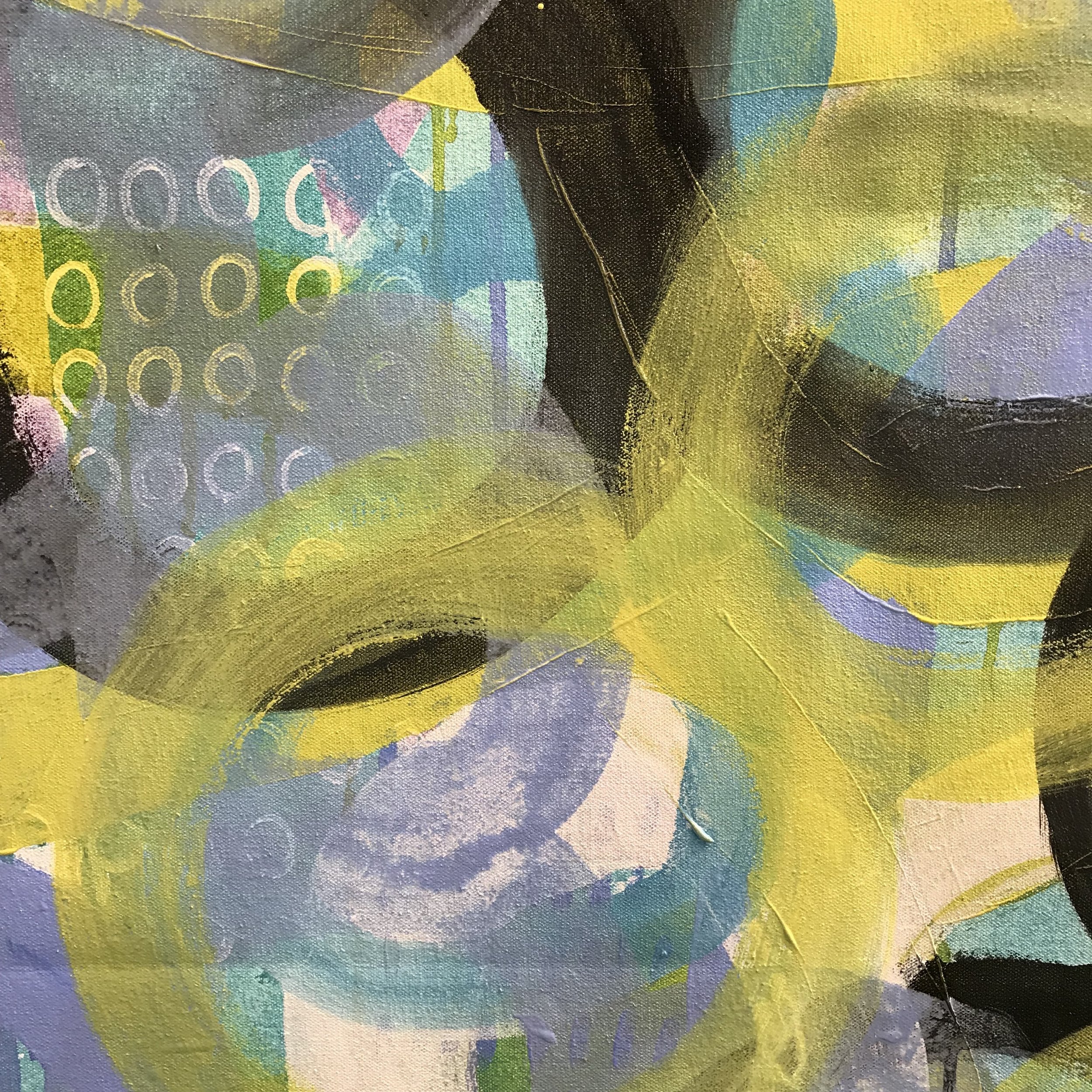
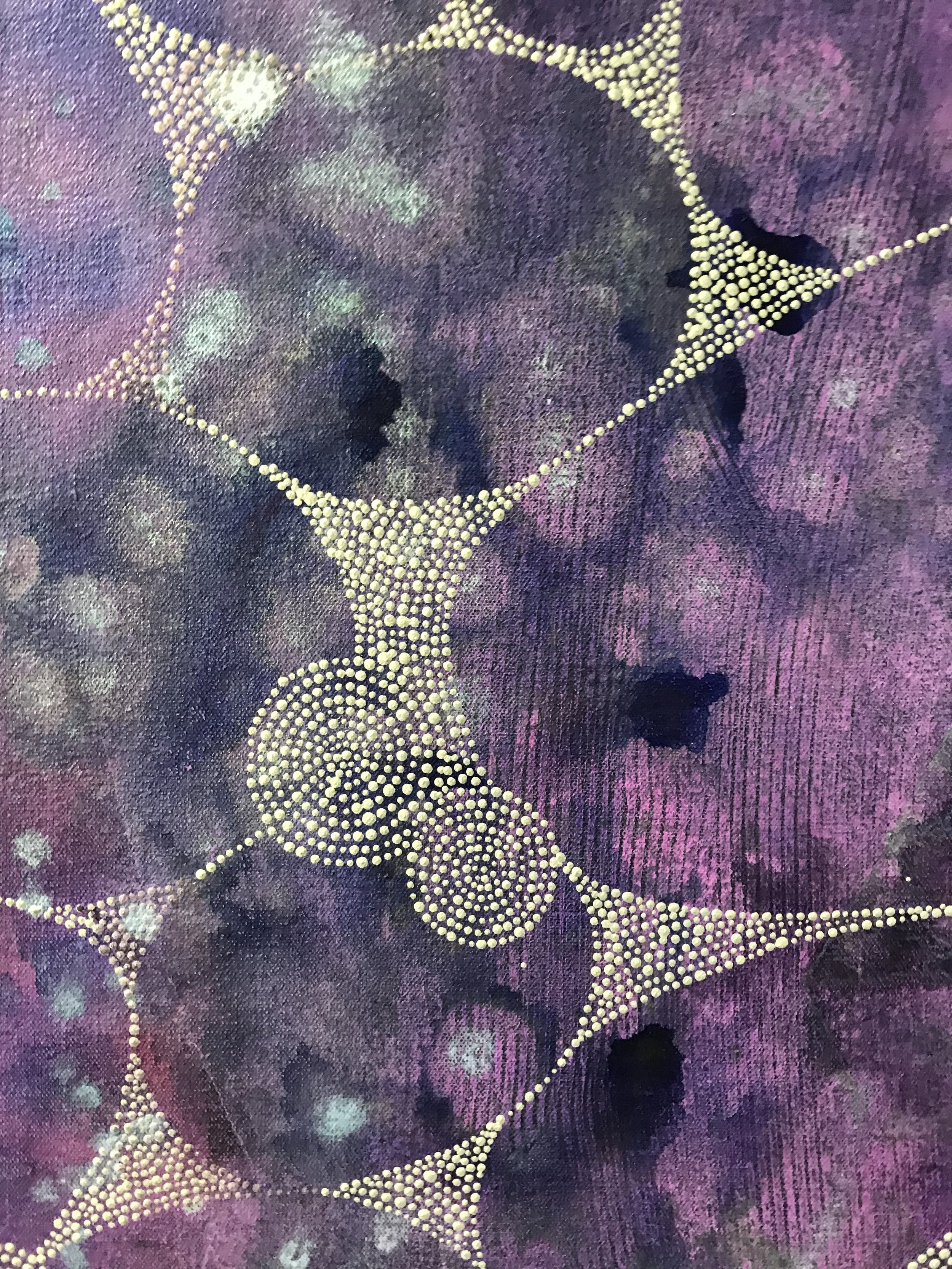
What does having a physical space to make art in mean for your process?
I got my first studio about 16 years ago and it changed everything. There is nothing so powerful as having a space that is mine, that I can arrange to fit my needs, and that has all of my stuff exactly where I left it when I last walked out the door. The ritual of entering the space, of being alone with myself and the work, and having a certain amount of control over interruptions is essential. I provide plenty of interruptions on my own, and they are easier to manage when I am the only person in the room. I really need to feel free to make a mess. Paint gets everywhere and it is okay.
I am very aware of what other work is in the room and know that it has a lot of influence on me. Sometimes, it all gets put away and only white paper and canvas are out as I develop something new. Other times, I’ll cover the walls with the work that is related, so there is a clear connection between older and newer work. It’s another way of getting what is internal and hidden out and visible so it is less likely to wriggle away before I understand the connections I am sensing.
I prepare carefully for Open Studios or any other event that brings people into my space. Switching from an inward facing space to a public space is a big change, and if planned well, can also be a palate cleanser that gives me a fresh start by clearing out the visual and mental clutter that accumulate during productive working times.
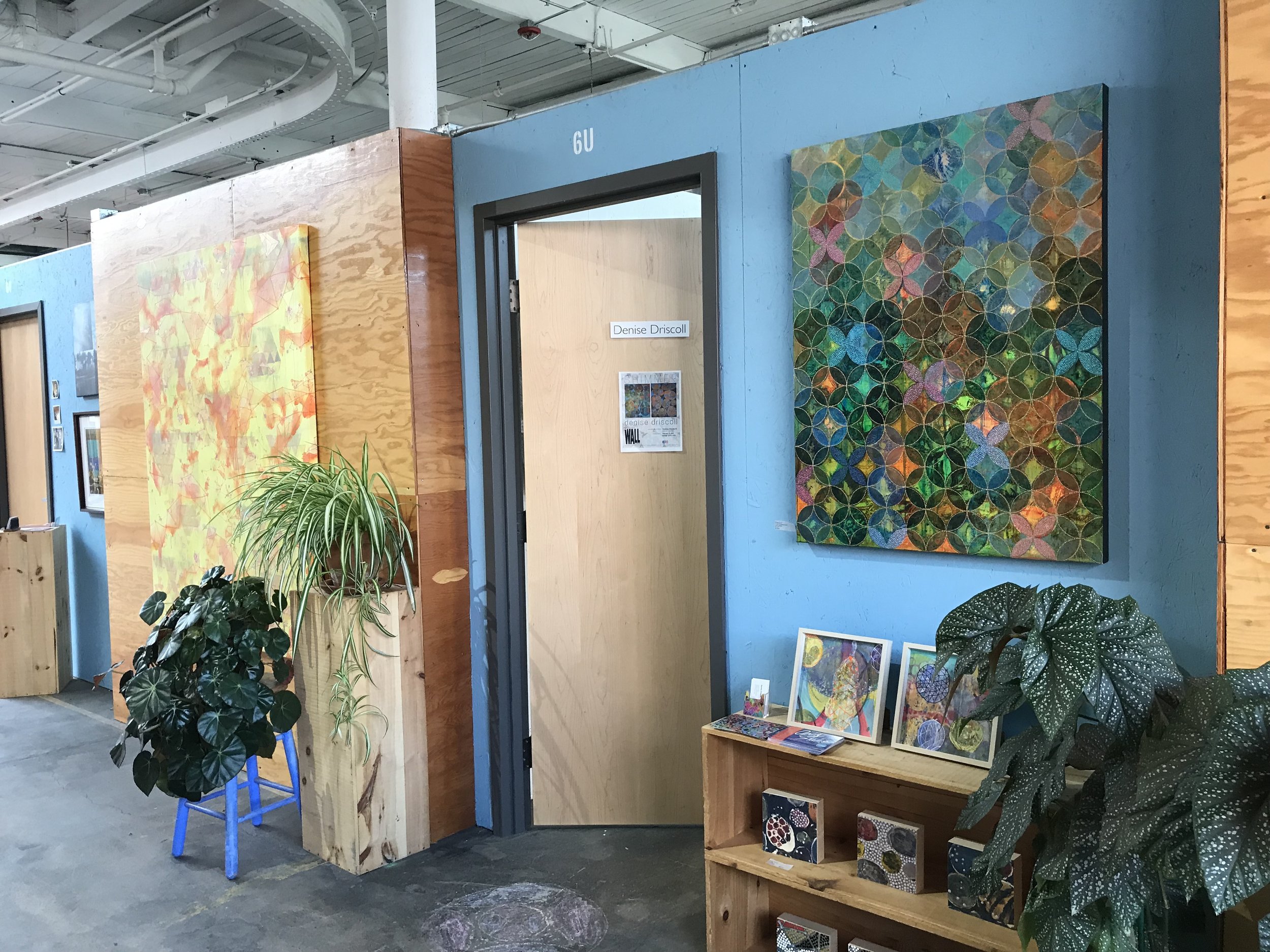
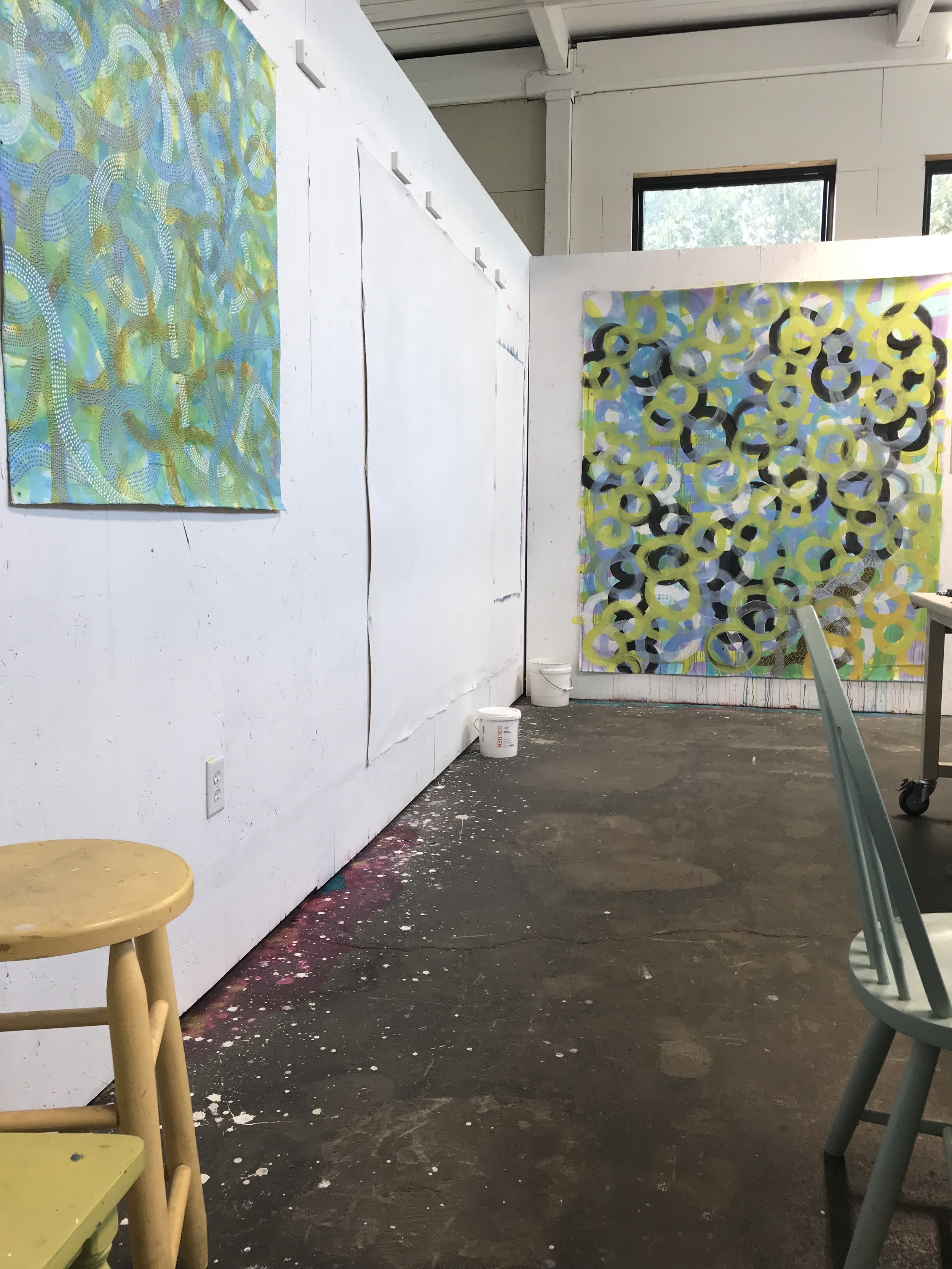
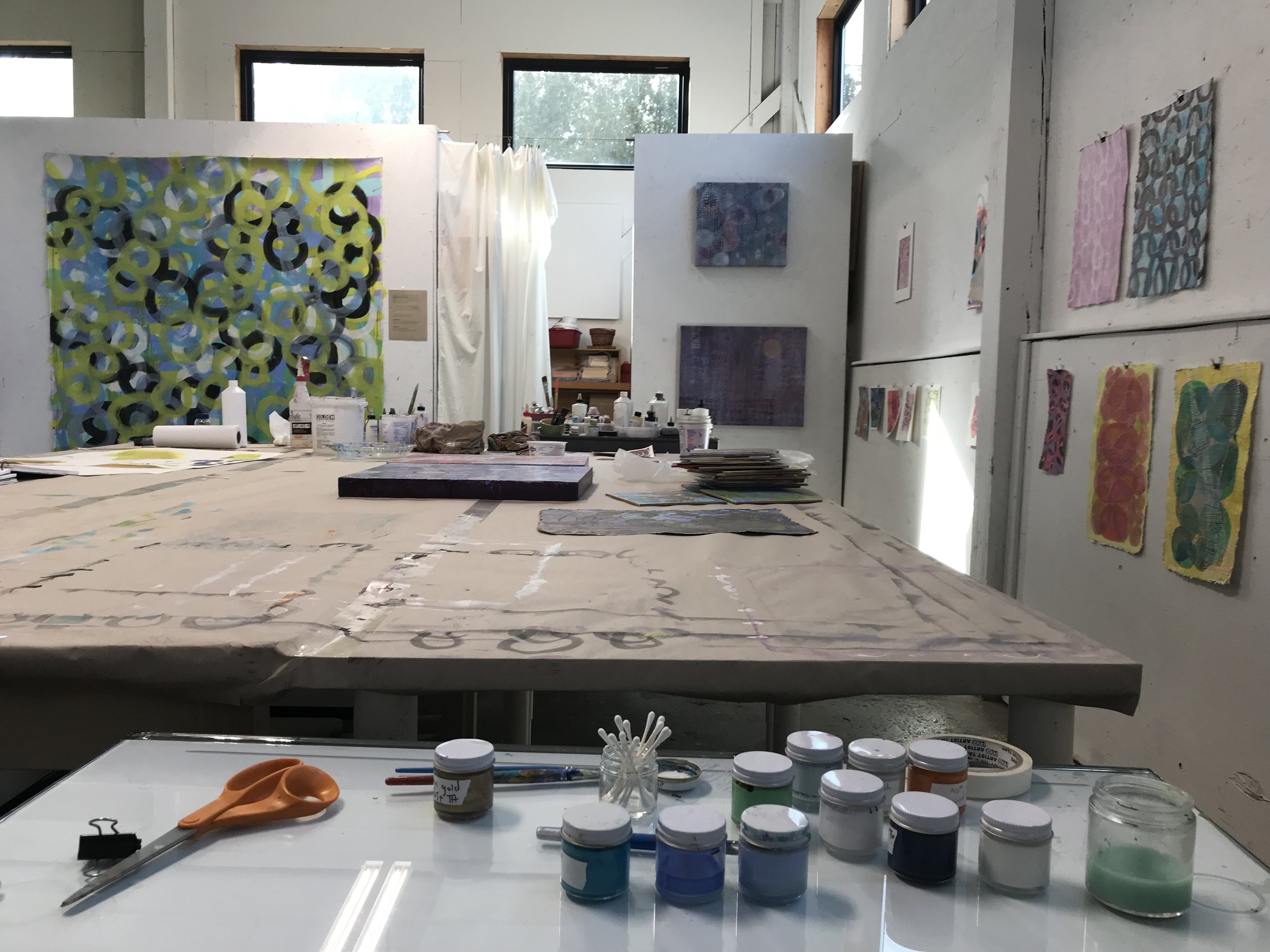
What are you presently inspired by—what is currently fueling your work?
Only in the past two years have I recognized that my avid voracious constant reading is the primary research that fuels my work. I thought of my reading as a guilty pleasure, but began to notice that the themes of interconnectedness, sentience, and inner space that I explored in my work were also all over the books I liked to read.
I read a lot of speculative fiction, science fiction, magical realism and other literature, and they are often in the form of audio books that I can listen to while painting. I have always read before going to sleep at night, but this past year, I’ve begun reading an hour every morning, from a physical book with pages, and taking notes. I am learning that I am more organized, thoughtful, and effective for the entire day if I stay away from social media first-thing and am more deliberate with my attention. This past year started with books about the sensory abilities of plants, which led to some ecological philosophy, which circled back to essays about how plants and forests function as communities.
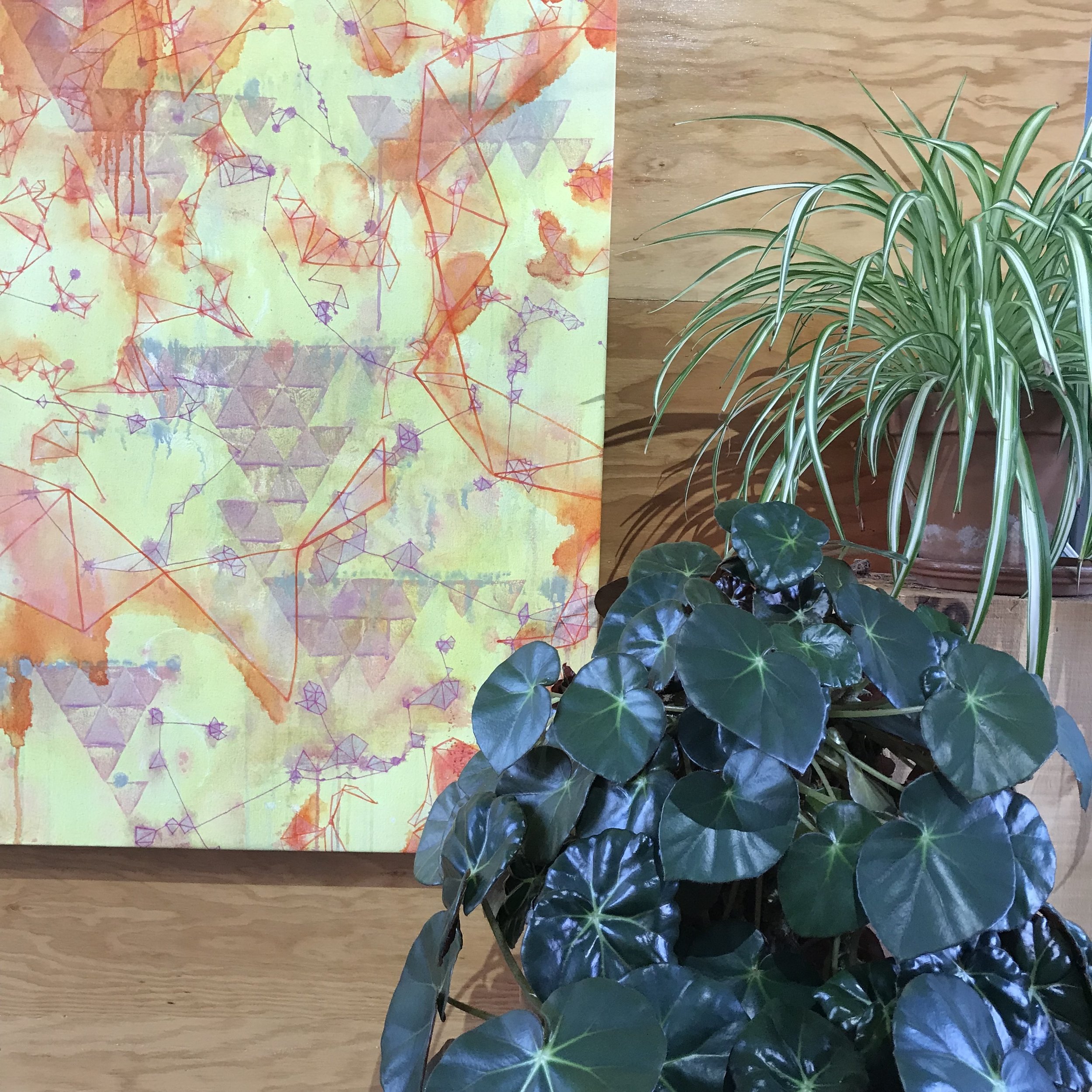
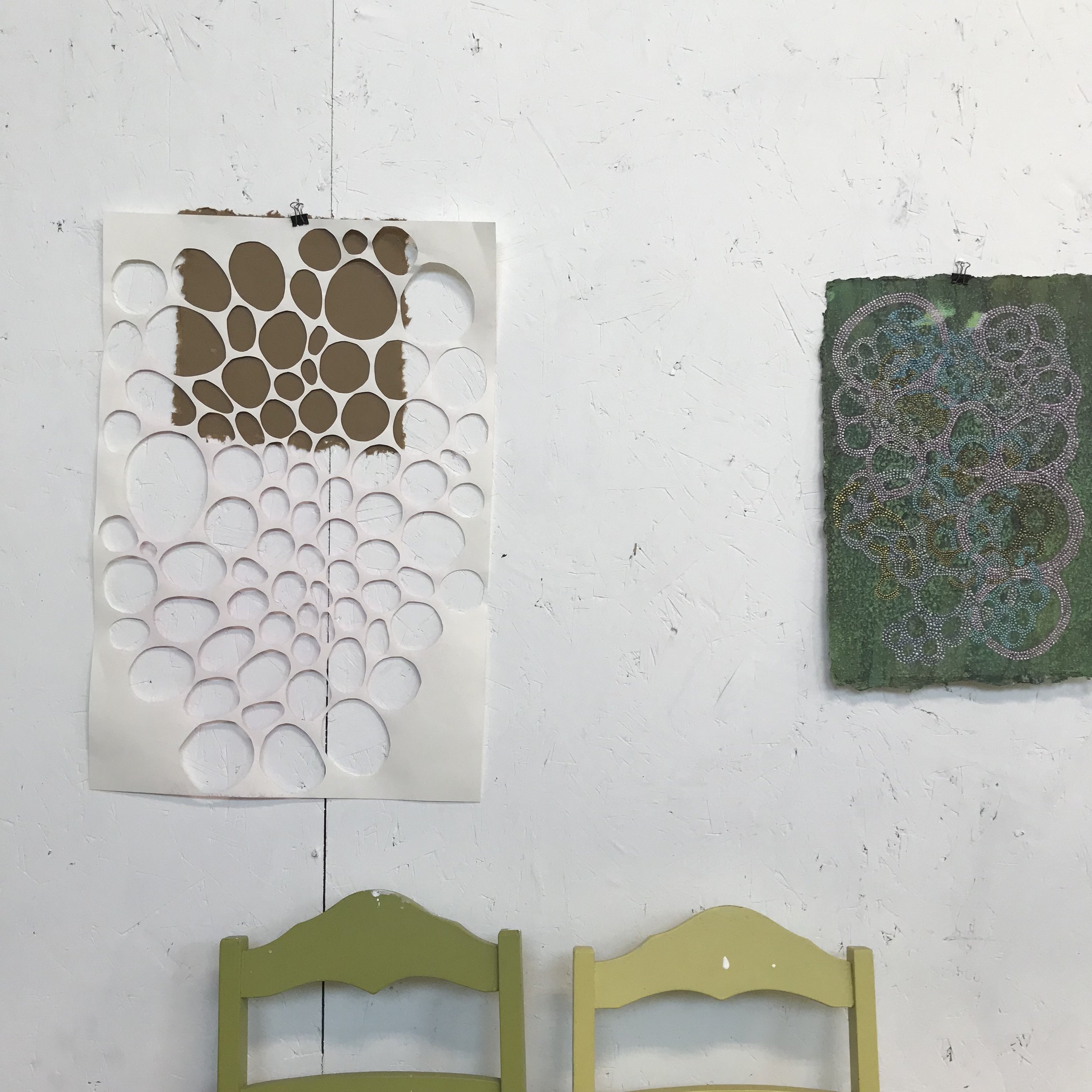
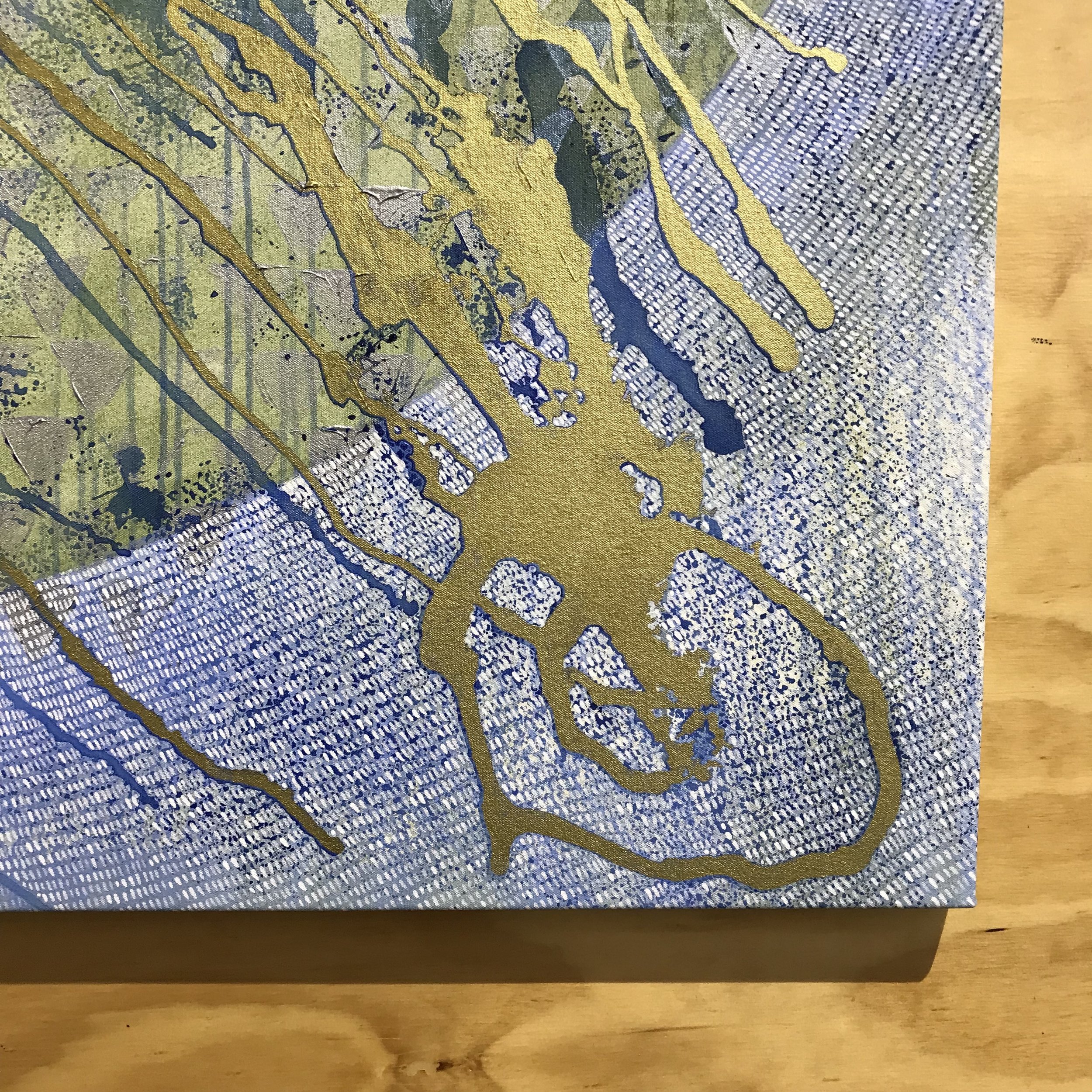
I am currently focusing on work for “Being”, my show with Gin Stone at Fountain Street this October. It has been a real luxury to give the work a full year to develop and this is the first time I’ve successfully said “no” to other events that might fragment my attention. My large-scale paintings are time consuming and can each take over two months to complete. Giving myself the time to read and write with these specific paintings in mind as they develop has been very rewarding.
I’m thinking about including a bookshelf in “Being” to share some of my research materials and notes.
Here’s a mini-list to start:
Braiding Sweetgrass, Robin Wall Kimmerer
The Broken Earth Series, N.K. Jemison
Dark Ecology, Timothy Morton
The Ecological Thought, Timothy Morton
Gathering Moss: A Natural and Cultural History of Mosses, Robin Wall Kimmerer
The Global Forest, Diana Beresford-Kroeger
Hainish Cycle, Ursula K. Le Guin
The Hidden Life of Trees, Peter Wohlleben
How Forests Think, Eduardo Kohn
Humankind, Timothy Morton
Hyperobjects, Timothy Morton
The Overstory, Richard Powers
The River of Consciousness, Oliver Sacks
Semiosis, Sue Burke
The Sixth Extinction, Elizabeth Kolbert
Staying with the Trouble, Donna Haraway
The Time Quartet, Madeleine L’Engle
Witchbody, Sabrina Scott
*The Norwood Space Center is a mix of retail, commercial and creative spaces that is reimagining an old paper mill.



